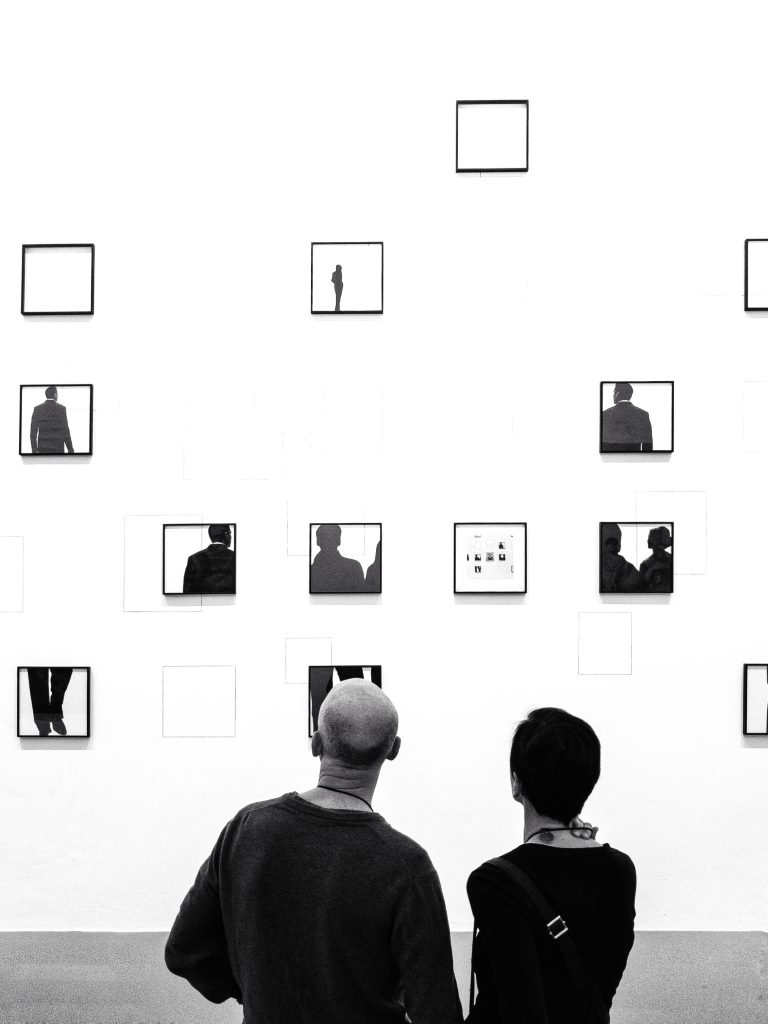How to Plan Your Day Trip from Beirut to Jeita Grotto, Byblos and Baalbek
Are you planning to visit Lebanon and have limited time to explore? Look no further than this full-day private tour, which covers three of the country’s most mesmerizing attractions. The tour starts at 7:30 am and includes pickup and drop-off from your hotel in Beirut in an air-conditioned vehicle. Your knowledgeable tour guide will provide insights into the history and significance of each of the sites visited.Jeita Grotto
Jeita Grotto is located 20 km north of Beirut and is the longest cave complex in the Middle East. It is brimming with beautiful stalactites and stalagmites that are millions of years old. The grotto also has an underground river, the longest in the Middle East, which flows through the caves. Upon arrival at Jeita Grotto, you will be taken on a tour of the lower cave by an experienced guide. You will witness the splendor of the limestone formations and the crystal-clear pools that dot the cave. Afterward, you will take a cable car to the upper cave, which is home to the most stunning natural formations.Byblos
After exploring Jeita Grotto, head to the ancient port city of Byblos, a UNESCO World Heritage site that dates back to 3000 BC. The city is known for its well-preserved Crusader Castle, Roman Theater, and Phoenician ruins. Upon arrival at Byblos, you will tour the city with your guide and visit the Fortress, the Crusader Castle, the Phoenician temples, and the Roman Amphitheater. You will also have free time to stroll along the picturesque old harbor, which is lined with seafood restaurants, shops, and cafes.Baalbek
The final stop on your tour is Baalbek, located in the Bekaa Valley, 85 km from Beirut. Baalbek is famous for its Roman ruins and stunning Temple of Bacchus, a UNESCO World Heritage site that dates back to the first century A.D. Upon arrival at Baalbek, you will be awestruck by the enormity of the temples. Your guide will take you on a tour of the ruins, explaining their history, symbolism, and significance. You will also have time to explore the market stalls and souvenir shops that line the streets.Book Your Tour Now
This full-day private tour of Jeita Grotto, Byblos, and Baalbek is perfect for travelers who want to see the highlights of Lebanon in a single day. With door-to-door transportation and an expert guide, you’ll enjoy a hassle-free experience that is both educational and entertaining. Book the tour here for an unforgettable experience that will leave you with memories to last a lifetime. The package includes hotel pick-up and drop-off, comfortable private transportation, entrance fees, lunch, and gratuities. Don’t wait to book your tour, as spots fill up quickly!
Frequently Asked Questions About Beirut
Beirut, the capital city of Lebanon, is a vibrant and bustling city with a rich history and culture. However, if you are planning to visit Beirut, you may have some questions in mind. In this article, we will answer some of the most frequently asked questions about Beirut to help you plan your trip.1. What is the best time to visit Beirut?
Beirut can be visited all year round, but the best time to visit is from April to June and from September to November. During these months, the weather is pleasant, and you can enjoy outdoor activities without feeling too hot or cold. The summer months (June to August) can be very hot and humid, while the winter months (December to February) can be cold and wet.2. What are the top things to do in Beirut?
Beirut has plenty to offer for all types of travelers. Some of the top things to do in Beirut include:- Visiting the National Museum of Beirut
- Exploring the ancient ruins of the Roman Baths
- Strolling around the vibrant streets of Gemmayze and Mar Mikhael
- Relaxing at one of the many beaches along the coast
- Trying Lebanese cuisine at some of Beirut’s top restaurants
3. What is the currency of Lebanon, and can I use credit cards in Beirut?
The official currency of Lebanon is the Lebanese Pound (LBP), but US dollars are widely accepted in Beirut. You can exchange your currency at banks or exchange offices throughout the city. Credit cards are also widely accepted, but it is always advisable to carry some cash with you.4. Is Beirut a safe city for tourists?
Beirut is generally considered safe for tourists, but it is always advisable to take precautions like not walking alone late at night and avoiding certain areas of the city known for criminal activity. It is also advisable to keep an eye on your belongings, especially in crowded areas.5. What is the best way to get around Beirut?
The best way to get around Beirut is by taxi or by using ride-sharing apps like Uber and Careem. You can also use the local bus system or the mini-buses known as “service” to get around the city, but these can be crowded and confusing for tourists.6. What are some traditional Lebanese dishes that I should try in Beirut?
Lebanese cuisine is diverse and flavorful, with a big emphasis on fresh ingredients and herbs. Some of the top dishes to try in Beirut include:- Hummus and pita bread
- Falafel
- Moutabbal (eggplant dip)
- Tabbouleh (parsley salad)
- Shawarma (grilled meat wrap)
- Kunafa (sweet cheese pastry)
7. What are some cultural events that take place in Beirut?
Beirut is known for its vibrant cultural scene, and many events take place throughout the year. Some of the top cultural events include:- Beirut International Film Festival
- Beirut Art Fair
- Beirut Design Week
- Beirut Marathon
- Fête de la Musique
8. What are some souvenirs that I can buy in Beirut?
Beirut is a great place to buy unique souvenirs and gifts for your loved ones. Some of the top souvenirs to buy in Beirut include:- Traditional Lebanese spices and herbs
- Handmade pottery and ceramics
- Lebanese sweets and pastries
- Olive oil and soaps
- Local handicrafts and textiles
9. What are some day trips that I can take from Beirut?
Lebanon is a small country, and there are many interesting day trips that you can take from Beirut. Some of the top day trips include:- Byblos, an ancient coastal city
- Jeita Grotto, a stunning underground cave system
- The Cedars of God, a UNESCO World Heritage site
- Tripoli, a historical city with a vibrant souk
- Harissa, a pilgrimage site with stunning views over the bay
10. What is the dress code in Beirut?
Beirut is a modern and cosmopolitan city, and there is no strict dress code. However, it is always advisable to dress modestly, especially when visiting religious sites. In general, it is best to avoid wearing revealing clothing or shorts when walking around the city.Book Your Tour Now
Beirut is a fascinating city with a lot to offer for tourists. By following our tips and recommendations, you can make the most of your trip and have a wonderful experience in this beautiful city. Whether you want to explore the ancient ruins, relax on the beach, or indulge in delicious Lebanese cuisine, Beirut has something for everyone.
How to spend your time as a tourist in Beirut
Beirut, the capital of Lebanon, is a city full of history, culture, and stunning Mediterranean views. Here are some things you can do to make the most of your time in the city as a tourist:1. Visit the National Museum of Beirut
Begin your trip to Beirut with a visit to the National Museum of Beirut. This museum houses an impressive collection of historical and archaeological artifacts, including pottery, mosaics, weapons, and sculptures dating back to the prehistoric times. You’ll learn about the country’s rich history from the Neolithic Period to the Crusades.2. Take a walk in Downtown Beirut
Downtown Beirut is the heart of the city, with a variety of shops, cafes, restaurants, and cultural attractions. Take a stroll down the elegant and bustling Beirut Souks, where you can shop for local products like olive oil, soap, and traditional Lebanese sweets. Walk along the magnificent Corniche Beirut promenade for a breathtaking view of the Mediterranean Sea.3. Explore the historic city of Byblos
Located just north of Beirut, Byblos is one of the oldest continuously inhabited cities in the world, dating back over 5000 years. Byblos offers a fascinating glimpse into the history of Lebanon and the Mediterranean. Explore the ancient city walls, Roman ruins, Crusader castle, and traditional souks.4. Indulge in Lebanese cuisine
Lebanese cuisine is unmatched, with its delicious and aromatic dishes that are healthy and flavorful. Try traditional dishes such as hummus, tabbouleh, baba ghannouj, kibbeh, and manakish. Look for local restaurants offering mezze, a collection of small appetizers shared among diners, or try street foods like falafel, shawarma, and kaak.5. Visit the Jeita Grotto
Jeita Grotto is an impressive natural wonder located just a short drive from Beirut. This unique cave system, formed over millions of years, offers visitors a memorable underground experience with sparkling stalactites and stalagmites. The cave is divided into two sections, the lower cave, which is accessible by boat, and the upper cave, which is accessible by foot.6. Go hiking in the Lebanese mountains
Lebanon’s mountains offer scenic views, charming villages, and perfect hiking trails. You can take a day trip from Beirut to the nearby mountains or make it an extended stay. The most popular mountain destinations include the Cedars of God, Chouf Cedar Reserve, Tannourine Cedar Forest, and Qadisha Valley.7. Visit the Mohammad Al-Amin Mosque
The Mohammad Al-Amin Mosque is an impressive example of modern Islamic architecture set in the heart of Beirut’s downtown. This grand mosque is a stunning sight with its blue-tiled dome and elegant minarets. Visit the inside for an even more awe-inspiring experience.8. Take a day trip to the Bekaa Valley
The Bekaa Valley is home to some of Lebanon’s most impressive Roman ruins and fertile vineyards. The ancient Roman city of Baalbek, with its well-preserved ruins, is a popular destination, along with the Anjar archaeological site. Take a tour of the vineyards and taste the famous Lebanese wine.9. Visit the Sursock Museum of Modern Art
The Sursock Museum of Modern Art, located in the historic district of Achrafieh, is a must-visit for art lovers. The museum is housed in an elegant 19th-century villa and displays a collection of modern and contemporary Lebanese art.10. Experience the nightlife in Beirut
Beirut is famous for its glamorous and lively nightlife scene, which offers something for everyone. Whether you prefer cozy bars, live music venues, upscale nightclubs, or trendy rooftop lounges, Beirut has it all.Book Your Tour Now
A visit to Lebanon’s capital, Beirut, offers a wealth of historical, cultural, and culinary discoveries. From exploring ancient ruins and natural wonders to indulging in fiery Lebanese cuisine and dancing the night away, Beirut offers opportunities to make the most of your time as a tourist.Table of Contents

